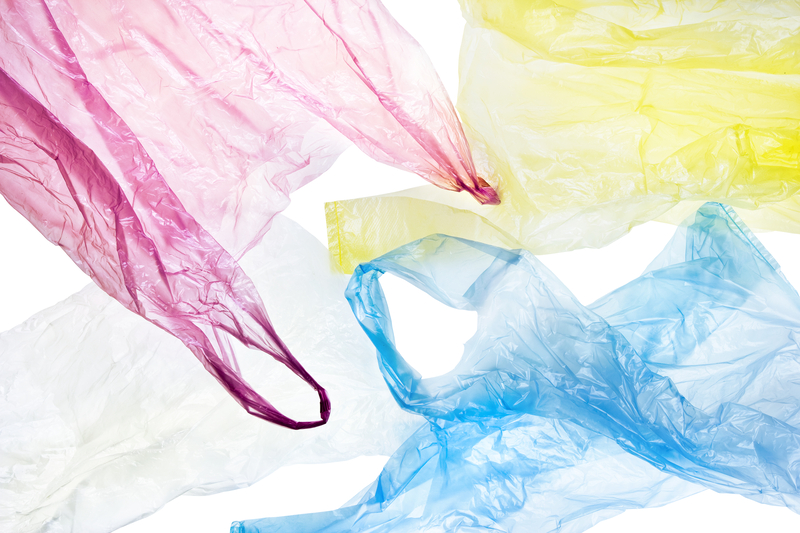The Eco-Friendly Guide to Recycling Pots and Pans
Do you have worn-out pots, dented pans, or cookware you no longer need? Don't toss them in the trash! Understanding how to responsibly recycle pots and pans is essential for reducing waste and protecting the environment. This comprehensive guide will teach you everything you need to know about recycling your old cookware in an eco-conscious way, including methods, creative reuse ideas, and essential recycling tips.
Why Recycling Pots and Pans Matters
Pots and pans are household essentials, but they don't last forever. When their non-stick coating peels or they lose their shape, it's tempting to throw them away. However, millions of cookware items end up in landfill each year, contributing to pollution and missed opportunities for resource recovery.
- Metals are recyclable: Many pots and pans are made from metals like stainless steel, aluminum, or copper, which can be recycled endlessly without loss of quality.
- Reduce landfill waste: Keeping cookware out of landfill helps lower greenhouse gas emissions and conserves natural resources.
- Support the circular economy: Recycling old cookware ensures valuable materials are reused in new products.
If you're wondering, can you recycle pots and pans?--the answer is yes, but the process isn't as simple as tossing them in your curbside recycling bin.

Understanding Which Cookware Can Be Recycled
Before recycling your pots and pans, it's vital to know which types are accepted. Here's an overview:
- Stainless steel pots and pans: Highly recyclable and often accepted by scrap yards.
- Aluminum cookware: Clean, uncoated aluminum is valuable to recyclers.
- Copper pots and pans: Copper is especially prized for recycling due to its high value.
- Cast iron pots and pans: Can be recycled with scrap metal, but are also valued for upcycling projects.
- Non-stick cookware: Pans with Teflon or ceramic coatings are harder to recycle due to chemical layers but may be accepted by some facilities after processing.
- Cookware with plastic handles or glass lids: These may need to be separated or discarded depending on recycling center requirements.
Items Not Suitable for Recycling
- Cookware with excessive grease or food residue
- Pots and pans lined with non-removable non-metal parts
- Heavily rusted or damaged items that cannot be processed
Tip: Always check with your local recycling facility or scrap metal dealer about their specific rules before dropping off cookware.
How to Prepare Pots and Pans for Recycling
Preparation is key to ensuring your pots and pans are accepted and recycled properly. Here's how to get them ready:
- Clean thoroughly: Remove grease, food, and debris. Recyclers won't accept dirty items.
- Remove non-metal parts: Detach plastic handles, glass lids, or rubber grips. Dispose of these in the appropriate waste streams if not recyclable.
- Check for coatings: If your pans are coated with Teflon (PTFE), ceramic, or enamel, ask your recycling center if they accept such items. Some centers have special equipment for handling coated metals.
- Bundle similar metals: Group stainless steel together, separate from aluminum or copper. This makes it easier for recyclers and sometimes even earns you a better payout at scrap yards.
Where to Recycle Old Cookware
Most curbside recycling programs do not accept large metal items like pots and pans. Instead, try the following alternatives:
Local Scrap Yards
- Scrap metal dealers are often the best option for recycling cookware.
- They accept all-metal items--aluminum, copper, iron, and stainless steel.
- You might even receive payment for large quantities or valuable metals, like copper.
Special Collection Events
- Many municipalities host annual metal recycling collection days.
- Check with your local waste management department for upcoming events.
Household Waste Recycling Centers (HWRC)
- Your local HWRC may have a dedicated spot for scrap metal drop-off.
- Some centers require you to sort by metal type.
Manufacturer Take-Back Programs
- Some major cookware brands offer "take-back" or recycling programs--contact customer service or check their website.
- A few companies even offer discounts on new items when you return old pots and pans.
Retailer Recycling Initiatives
- Stores like IKEA or specialty kitchenware outlets occasionally offer recycling drop-offs for old cookware.
- Look out for promotional recycling events, especially around Earth Day or the holidays.
Pro tip: Don't forget to check Earth911.com or your local government website for specific recycling locations in your area.
Eco-Friendly Alternatives: Donate or Reuse
Is your old cookware still usable? Consider giving it a second life before recycling. Options include:
- Donate to thrift stores, shelters, or community centers. Many organizations gladly accept gently used cookware to help those in need.
- Offer on online platforms: Post on Craigslist, Facebook Marketplace, Freecycle, or Nextdoor to give your pots and pans to someone who can use them.
- Repurpose or upcycle: Even if your pans are no longer ideal for cooking, they can serve as plant pots, storage bins, wall art, or garden decorations.
Creative Upcycling Ideas for Old Pots and Pans
- Herb gardens: Drill holes in the bottom and plant kitchen herbs.
- Bird feeders or baths: Hang or mount pans on a post for birds.
- Wall clocks: Add a clock mechanism for a unique kitchen timepiece.
- Storage caddies: Use as containers for office supplies or crafts.
- Garden art: Paint and decorate for whimsical yard decor.
Repurposing not only reduces waste but can also add character and function to your home or garden.
What Happens to Recycled Pots and Pans?
Once your cookware reaches a recycling facility, the process typically unfolds as follows:
- Sorting: Metals are separated by type--steel, aluminum, copper, etc.
- Shredding and melting: Cookware is shredded, then melted down in furnaces specific to each metal.
- Purification: Melts are purified to remove impurities, ensuring the recycled metal is high-quality.
- Manufacturing: The pure, recycled metal is formed into new products--sometimes even new pots and pans!
Recycling metals saves up to 90% of the energy compared to producing new metal from raw ore, making it an excellent choice for sustainability.
Common Questions About Recycling Cookware
Can I put pots and pans in my blue recycling bin?
Generally, no. Most municipal recycling programs do not accept large or bulky metals in curbside bins. Take them to a scrap yard or designated drop-off center.
What about non-stick or Teflon-coated pans?
Check with your local recycler. Some facilities accept coated pans, while others don't. Try to remove the coating if possible or separate the metal base. Manufacturer or retailer take-back programs may be your best bet.
Should I remove handles and lids?
Yes: Remove and dispose of any non-metal components as instructed by your recycling center.
How can I tell what metal my pot or pan is made from?
Check for stamps or labels on the bottom--words like "stainless steel," "aluminum," or "copper" indicate the metal type. A magnet will stick to steel but not to copper or aluminum.
Is it worth the effort to recycle one or two pans?
Absolutely. Every item counts, and if you gather small items over time, you can make fewer trips to the recycling center, keeping even more material out of landfill.
Key Tips for Eco-Friendly Disposal of Cookware
- Never put large metal cookware in regular curbside bins.
- Remove food residue, coatings, and non-metal parts before recycling.
- Contact your local scrap yard or recycling center if you're unsure about what's accepted.
- Consider donation or creative reuse before recycling to maximize environmental benefits.
- Support brands that offer recycling and take-back programs for cookware.
- Raise awareness by sharing your recycling journey with friends and family!

The Environmental Impact of Recycling Pots and Pans
Recycling metals from old kitchenware has huge environmental benefits:
- Reduces mining and raw material extraction.
- Lowers greenhouse gas emissions by conserving energy.
- Decreases landfill use and harmful leachate.
- Encourages resource efficiency within manufacturing.
For example, recycling one ton of steel saves more than 2,500 pounds of iron ore and reduces CO2 emissions by nearly 60% compared to producing new steel from scratch!
Conclusion: Make Recycling Pots and Pans Part of Your Eco-Friendly Routine
By understanding how to recycle pots and pans responsibly, you're making a positive impact on the planet and supporting the circular economy. Whether you drop them at a scrap yard, donate to someone in need, or get creative with upcycling, there are plenty of ways to ensure old cookware avoids the landfill.
Take the eco-friendly route: clean it, separate materials, and research your disposal options. Your simple actions can help conserve resources, reduce emissions, and inspire a greener lifestyle at home and beyond.
Remember:
- Don't landfill--recycle your pots and pans for a cleaner, greener world!
- Share these tips to encourage others to join in eco-conscious recycling efforts.
Start today--your kitchen cleanup can be the first step towards a more sustainable future!
